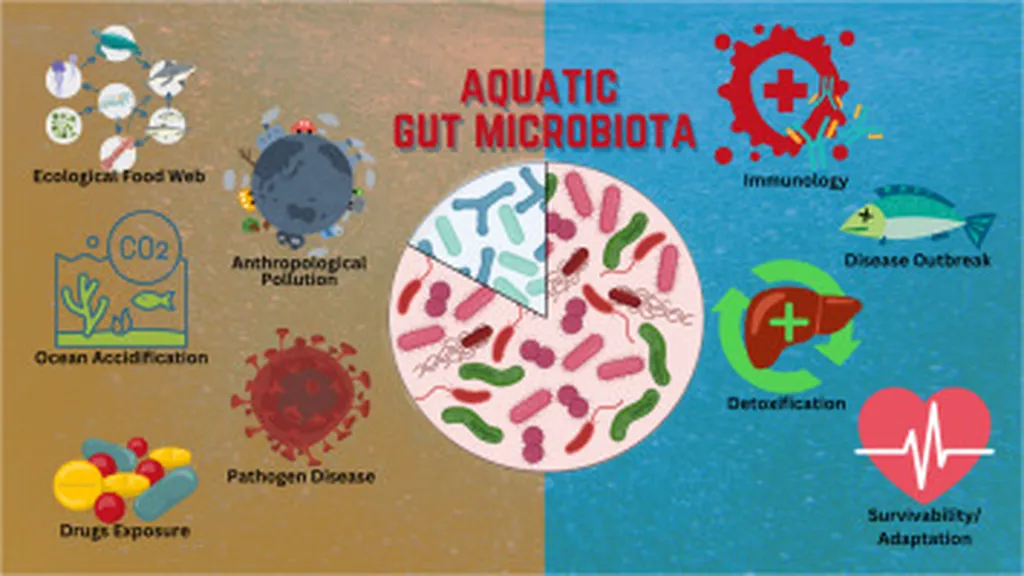In the vast and intricate world of aquaculture, a microscopic ecosystem plays a monumental role in the health and productivity of fish and shellfish. This ecosystem, the gut microbiota, is the focus of a recent review published in the journal *Frontiers in Cellular and Infection Microbiology* (translated to English as *Frontiers in Cell and Infection Microbiology*), led by Nandini Rai from the School of Biological and Environmental Sciences at Shoolini University of Biotechnology and Management Sciences in India. The research delves into the symbiotic relationship between aquatic organisms and their gut microbes, offering insights that could revolutionize aquaculture practices and bolster the industry’s sustainability.
The gut microbiota of aquatic organisms is a complex community of microbes that aids in digestion, nutrient assimilation, and immune response. “These microbes are not just passive residents; they actively contribute to the host’s physiology and health,” explains Rai. The review highlights significant differences in the diversity and function of gut microbial communities between finfish and shellfish, as well as between freshwater and marine species. For instance, the gut microbiota of shellfish, particularly those in bivalves, is more diverse and plays a crucial role in breaking down complex dietary substrates, which is essential for their growth and survival.
Environmental factors such as water temperature, salinity, and pH, along with host-specific factors like genetics and diet, shape the structure of these microbial communities. Understanding these interactions is key to improving gut health and nutrient use in aquaculture. “By manipulating these factors, we can enhance the growth performance, feed conversion efficiency, and disease resistance of farmed aquatic species,” Rai adds.
The review also identifies promising future research directions, including the use of probiotics, prebiotics, and dietary interventions. These strategies, combined with multi-omics approaches—such as genomics, metabolomics, and proteomics—could provide a holistic understanding of host-microbe interactions. This knowledge could lead to the development of targeted interventions that optimize gut health and productivity in aquaculture.
The implications of this research are profound for the aquaculture industry. As the demand for seafood continues to rise, the need for sustainable and efficient aquaculture practices becomes increasingly critical. By harnessing the power of gut microbiota, the industry can improve the health and productivity of farmed species, reduce environmental impacts, and enhance economic viability.
Moreover, the insights gained from this research could extend beyond aquaculture. The principles of gut microbiota manipulation could be applied to other sectors, including human health and agriculture, offering a blueprint for enhancing productivity and sustainability across various industries.
In conclusion, the review by Rai and her team sheds light on the intricate world of gut microbiota in aquatic organisms, highlighting its potential to transform aquaculture practices. As the industry continues to evolve, the insights gained from this research could pave the way for a more sustainable and productive future. The journey towards understanding and harnessing the power of gut microbiota is just beginning, and the possibilities are as vast as the ocean itself.

